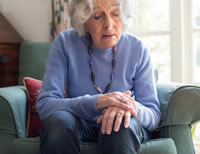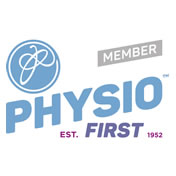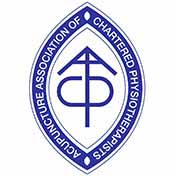Parkinson’s Disease (PD) is a condition which disturbs the function of specific areas within the brain which are associated with the co-ordination of movement. Normally, messages from this area of the brain are sent along the spinal cord and into the muscles of the body to produce movement. Neurotransmitters (chemical messengers) are responsible for carrying this information along nerve junctions (synapses) from the brain, to the spinal cord, and finally to the muscles. In PD, a particular neurotransmitter called Dopamine becomes reduced in concentration, as the cells in the area of the brain that produce this chemical begin to die. Without these cells and their essential neurotransmitter, the messages that produce movement become slower and co-ordination and muscle tone becomes altered.
The exact cause of PD is unknown, but it is a progressive disease process with a time course from onset of between 10 and 15 years. Some cases progress more rapidly, others so slowly that degeneration may hardly be detected.
Diagnosis
As the onset of symptoms in PD is gradual, it can take months or even years for the first signs and symptoms to develop, so it can therefore be difficult to diagnose. There are no specific tests to show that an individual has PD, rather the diagnosis is based largely upon a detailed history and examination of the individual and their presenting symptoms.
Common characteristics of PD include:
- Tremor: This often begins in one hand and may be the first symptom for people with PD. It generally affects one side of the body and usually the arm more than the leg. Tremors don’t necessarily prove a handicap to function as they are often maximised at rest and may reduce or even disappear with movement and use of the limb affected.
- Slowness of Movement (‘bradykinesia’): In general, all movements can be affected and become progressively slower in speed and reduced in range. Speech may also become slower and softer. As a result of this altered movement, handwriting may become smaller and more untidy, and fine motor skills (such as tying shoe laces, cutting up food, fastening buttons) and repeated movements (such as stirring and polishing) can be noticeably affected. Progressively, it becomes more difficult for the individual to initiate movements and therefore performing tasks can take much longer than normal.
- Rigidity / Stiffness: Muscle ‘tone’ becomes increased which causes resistance to movement of a joint and a resulting stiffness. This stiffness can make activities such as getting up from a chair or turning over in bed more difficult.
- Altered walking (gait): As the disease progresses, a typical gait pattern emerges in individuals with PD. This is characterised by a short, shuffling pattern in which the individual finds it difficult to transfer their weight from one foot to the other, or to take longer strides. Arm swing during walking also becomes affected as the muscles become more rigid and the trunk loses its normal pattern of rotation which is associated with walking. Posture becomes more stooped, and it is often difficult for an individual to initiate the first steps of walking, or to turn around, which causes them to feel ‘glued’ to the spot.
- Automatic movements: Movements such as blinking and swallowing that are normally automatic can be specifically reduced or lost. This can cause the loss of expression on an individual’s face so that it becomes ‘mask-like’. It can also impair the swallowing of saliva, and disturb the coughing reflex. Socially, individuals may find these symptoms difficult to deal with.
- Posture: A typical ‘Parkinsonian’ posture is characterised by flexed joints and a rounded spine which results in a stooped posture. It can be usually corrected upon prompting, but maintaining the correct posture can be difficult and therefore only temporary.
- Balance: A combination of altered posture, muscle changes and reduced movement ability affects the overall balance of an individual with PD when standing and walking and, as such, they are at increased risk of falling.
Other associated symptoms of PD may include memory problems, fatigue, depression, altered bladder / bowel function and sleep disturbance.
Given the spectrum of symptoms and difficulties, individuals with PD need input and assistance from a number of health professionals, and whilst there is no cure, certain medications are used to try to control the symptoms.
Physiotherapy for PD
 Physiotherapy plays a very important role in the management of people suffering with PD, as neuro-rehabilitation focuses on assisting mobility, movement and function. Following a thorough assessment of an individual’s posture, balance, mobility and functional ability, a clearer impression of their specific difficulties and needs can be gained, and a rehabilitation plan formulated. This should include strategies of how to improve the safety of the individual by reducing their risk of falling, advice regarding any aids and adaptations that may be necessary, and liaison with other associated health professionals to assist with day-to-day functional activities if required.
Physiotherapy plays a very important role in the management of people suffering with PD, as neuro-rehabilitation focuses on assisting mobility, movement and function. Following a thorough assessment of an individual’s posture, balance, mobility and functional ability, a clearer impression of their specific difficulties and needs can be gained, and a rehabilitation plan formulated. This should include strategies of how to improve the safety of the individual by reducing their risk of falling, advice regarding any aids and adaptations that may be necessary, and liaison with other associated health professionals to assist with day-to-day functional activities if required.
Advice and support to the individual and their family /carers is an essential part of the management process, and this helps a person with PD to cope with the physical, emotional and social difficulties that this disease brings.
Our specialist team at Yorkshire Neuro Physiotherapy can provide an assessment and, if necessary, subsequent and regular physiotherapy treatment sessions for individuals with PD. This can be provided either within their own home or care home, or from one of our designated neuro-physiotherapy clinics. Our experienced Neuro Physiotherapists provide a caring and supportive approach to rehabilitation and all physiotherapy programmes are individually-tailored and goal-orientated based upon the specific needs and personal aims of each client.
Please do feel free to get in touch if you would like to know more about our services, or to ask any questions you may have about physiotherapy for Parkinson’s Disease.





